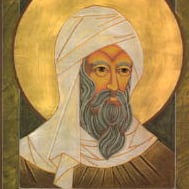Pope Leo XIV – Inaugural Mass Homily
Elected on May 8, 2025, as the 267th successor of St. Peter, Pope Leo XIV’...

The life of St. John Damascene (also known as Saint John of Damascus) began around 675 AD, already a generation after the area had been conquered by Muslim armies. Saint John Damascene was born into a rich family and spent the early years of his adult life serving as the official representative of the Christian community to the Muslim Caliph. He later abandoned this political task to join the monastery of St. Sabas near Jerusalem where he became a priest and ultimately bishop. St. John Damascene is known as one of the last of the Fathers of the Church. He was a strong defender of the use of images (icons) in Christian worship against the iconoclasts and wrote a book On the Orthodox Faith that sums up the doctrinal heritage of the earlier Greek Fathers. In this great synthesis we find a systematic treatment of the central Christian doctrines, especially the Trinity, Creation, and the Incarnation. St. John Damascene’s treatment of the Sacraments is also extensive, and his emphasis on the real bodily presence of Jesus in the Eucharist is very strong. Notable too in his teaching is a fully developed doctrine of the Blessed Virgin Mary including her perpetual virginity, her freedom from sin throughout the whole of her life, and her bodily assumption into heaven. St. John Damascene’s influence on later theology was considerable indeed. In the Latin Middle Ages, he was known to Peter Lombard and St. Thomas Aquinas. All throughout the Middle Ages his works were known and widely used by Eastern Christian Theologians, especially the Slavs. He died around the year 749 AD and was declared a Doctor of the Church by Pope Leo XIII in 1890. Biography by Dr. Italy